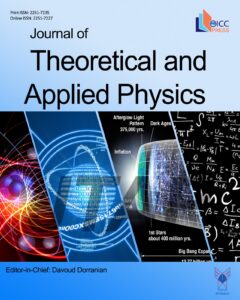Evaluation of Surface Dielectric Barrier Discharge (SDBD)-Plasma Activated Normal Saline for Reduction of Escherichia coli Populations in fish (Oncorhynchus mykiss ) fillets
Authors
-
Meysam Nikpour
 1
1
-
Mohammadreza Hosseinzadeh
 2
2
-
Saeed Mirzanejhad
 1, 3
1, 3
-
Abasalt Hosseinzadeh Colagar
 2
2
-
Farshad Sohbatzadeh
*
 1, 3
1, 3
Abstract
Recently, the antibacterial effects of plasma-activated liquids have been noticed by food industries and researchers. Some research reported that reactive oxygens and nitrogen species (RONS) that are generated in the treatment liquids destroyed cells. In this study, we evaluated surface dielectric barrier discharge (SDBD) -plasma for inactivation of Escherichia coli and quality attributes of fish meat. For this aim, at first normal saline (NS) solutions activate by SDBD-plasma in the different irradiation times. Then, bactericide effects of these activated normal saline (NS*) solutions were used for inactivation bacteria, at a 5´107 CFU/ml suspension concentration, in the different immersion treatment times. Results show that with increasing plasma irradiation time, the concentration of RONS increased, but no significant difference was observed in its bactericide effects with increasing immersion times. Also, our result showed that discharge of plasma at 5 minutes and immersion time of 15 minutes, contained the highest inactivation of E. coli or bactericide effects. One of the reasons for these phenomena may be the increase of reactive speces concentrations, which are poison effects on the cells. The pH, humidity, and surface color of the fish fillets were changed, but the tissue, protein, and lipid content were not changed significantly.



